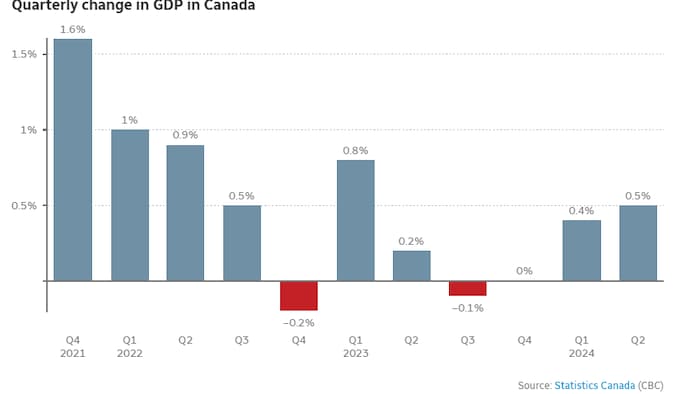Business and Economy
Canadian economy grew in 2nd quarter, mostly from government spending and higher wages
By Jenna Benchetrit, CBC News, RCI

Government spending rose on higher wages for public employees and with an increase in hours worked across all levels of government. (File photo: Tara Clark/Unsplash)
Growth was better than expected but ‘underlying reality is less impressive’
Canada’s gross domestic product grew 2.1 per cent at an annualized rate in the second quarter of 2024, though GDP per capita fell for the fifth consecutive quarter, Statistics Canada said on Friday.
The annualized growth rate was above the Bank of Canada’s 1.5 per cent estimate from July.
Canadian households slowed their spending 0.2 per cent (after a 0.9 per cent rise in the first quarter), with necessities like rent, food and electricity leading the increase.
The growth was offset as people bought fewer trucks, vans and utility vehicles, and spent less while abroad.
Employee compensation rose 1.6 per cent in the second quarter, with strong wage growth in the mining and oil and gas extraction industry, as well as higher wages in health care and social assistance, educational services (partly due to retroactive payments for Ontario schoolteachers) and finance and insurance.
Canadian economic growth was modestly better than expected
in the second quarter, wrote CIBC economist Andrew Grantham in a note.
But weak momentum heading into the third quarter gives ample reason for the [Bank of Canada] to continue cutting interest rates,
he added.
‘Underlying reality is less impressive’
Government spending rose on higher wages for public employees and with an increase in hours worked across all levels of government.
Business spending on machinery increased by 6.5 per cent in Q2, particularly for aircraft and other transportation-related equipment, the data agency said.
Housing investment was down 1.9 per cent, marking the biggest decline since the first quarter of 2023. There was lower investment in new construction and renovations fell.
Investments in non-residential structures grew, but were offset by declines in non-residential building construction.
Despite the stronger GDP growth in the second quarter, the underlying reality is less impressive. The growth was largely driven by increased government spending and wage adjustments,
wrote Andrew DiCapua, a senior economist with the Canadian Chamber of Commerce.
While there is a positive note with business investment finally picking up …
the economy continues to show signs of underlying weakness, DiCapua wrote, saying he anticipates another rate cut at the Bank of Canada’s September meeting next week.

Quarterly change in GDP in Canada. Photo: Statistics Canada (CBC)
This article is republished from RCI.





















